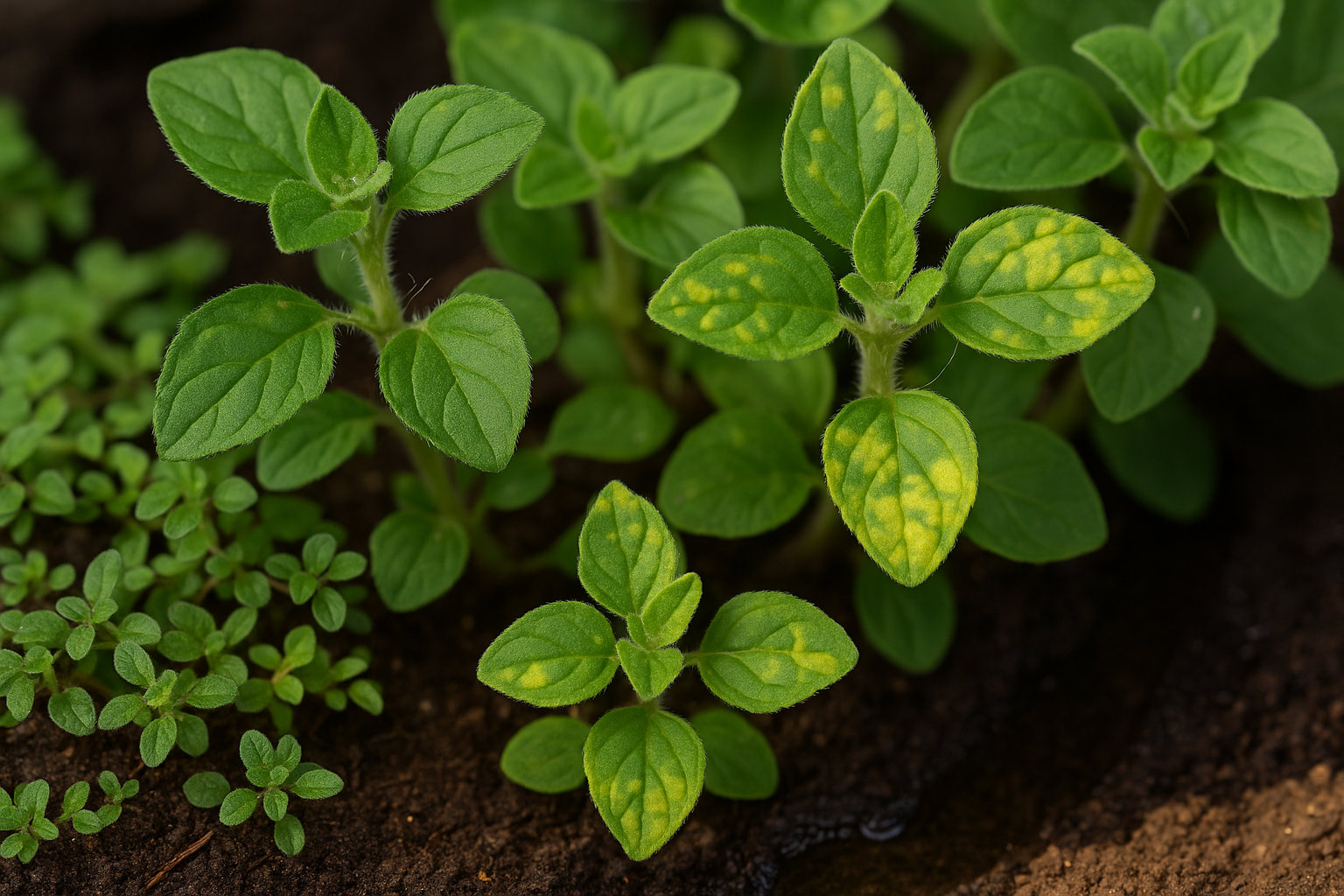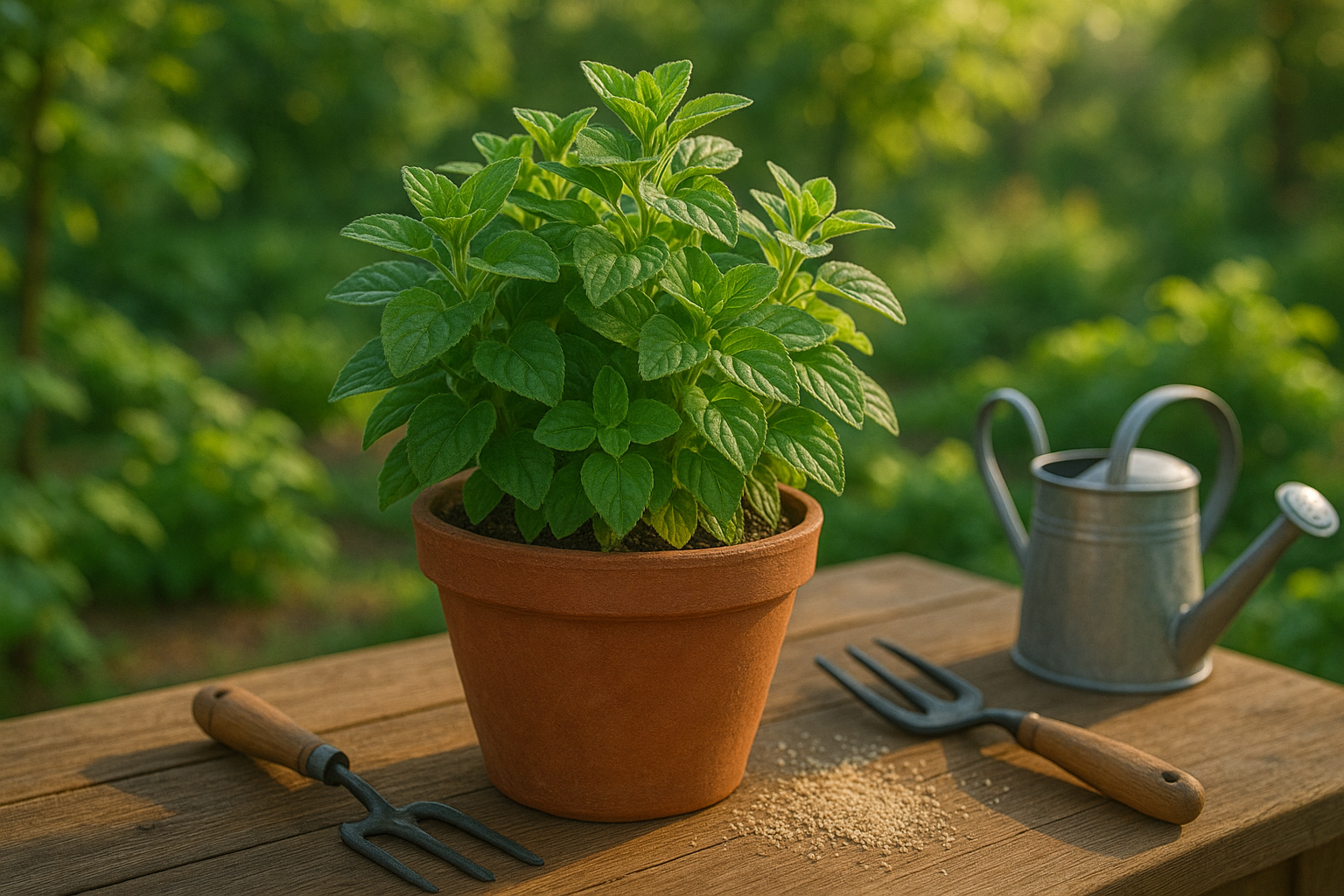Spotting Trouble

Yellow leaves on oregano are usually easy to spot, but knowing what’s normal and what’s a warning sign can make all the difference for your plant’s health. Natural aging often causes a few older leaves—usually those at the bottom—to turn yellow, dry up, and fall off. These older, yellowing leaves are often soft or crispy, and the discoloration is gradual and limited to a few spots, so there’s nothing to worry about.
However, if you see a sudden burst of yellowing across younger leaves, or if the yellowing spreads unevenly in blotches, patches, or affects leaf veins, that points to stress. Stress-related yellowing can be caused by overwatering, poor drainage, pest infestations (look for tiny webbing or sticky residue), or nutrient deficiencies. Sometimes you’ll also notice the plant wilting, stunted growth, or even a soft, mushy stem.
Spotting these signs early means you can take quick action—like adjusting your watering schedule or checking for pests—before stress spreads and weakens the entire plant. Catching stress yellowing early can prevent irreversible damage, help you maintain a healthy oregano plant, and ensure you always have a lush, green supply for your cooking needs.
So, keep a close eye on both older leaves and new growth to quickly spot which yellow leaves are just part of the plant’s life cycle and which are an urgent call for help.
Watering Woes

Both overwatering and underwatering can cause oregano leaves to turn yellow, but for different reasons—overwatering suffocates the roots, while underwatering leaves the plant parched.
With overwatering, the soil stays soggy, depriving roots of oxygen and leading to root rot. You might notice consistently damp soil, mushy or blackened roots, and a musty smell coming from the pot.
Underwatered oregano, on the other hand, has dry and brittle leaves, wilted stems, and soil that easily pulls away from the container’s edges.
If you see leaves drooping or yellowing, check the soil: poke your finger about an inch deep—if it’s dry, it’s time to water; if it’s moist, hold off.
For healthy, thriving oregano, water thoroughly but only when the soil feels dry at that depth, typically about once per week indoors (more often in peak summer heat or outdoors).
Use pots with drainage holes to prevent excess moisture buildup, and avoid letting your plant sit in a saucer of water.
Periodically loosen compacted soil so water distributes evenly, and consider a moisture meter if you’re unsure.
By watching your plant and feeling the soil regularly, you’ll quickly recognize its watering needs, keeping yellowing leaves at bay and your oregano robust.
Soil Health and Drainage
Well-draining soil is essential for keeping your oregano healthy, lush, and free of yellow leaves. When soil holds too much water, oregano roots can quickly suffocate and rot, leading to stressed plants with faded or yellowing foliage.
Two of the most common soil issues are compaction and nutrient deficiencies. Compacted soil makes it difficult for water to move through, trapping it around roots and making it hard for them to “breathe.” You might spot wilting leaves, yellow patches, or even a funky smell near the base of the plant—clues that your oregano is struggling. Poor soil can also lack key nutrients like nitrogen or magnesium, which turns leaves pale or yellow.
Luckily, you don’t need fancy tools to fix most soil problems. In garden beds, simply loosening the soil with a hand fork and mixing in a few handfuls of coarse sand or perlite will help water drain quickly. For extra nutrients, dig in compost or well-rotted manure; both improve drainage and feed your plants naturally.
If you’re growing oregano in pots, always choose containers with drainage holes and layer some gravel or clay pebbles at the bottom before adding your potting soil. Check soil moisture by poking a finger in—if it’s soggy, let it dry out between watering sessions.
These simple steps go a long way toward building a healthy foundation for vibrant green oregano leaves in any home garden.
Light, Temperature, and Humidity
Oregano thrives best when it receives plenty of sunlight—ideally about six to eight hours of direct sun each day. Outdoors, plant oregano in a spot that gets full sun all day, such as a south-facing garden bed or a sunny patio.
Indoors, finding enough natural light can be tricky, especially in winter, so placing your oregano pot in a south- or west-facing window is crucial. If your indoor space lacks strong sunlight, supplement with a quality LED grow light set on a timer for 12 to 14 hours daily.
Temperature also plays a major role: oregano prefers warm conditions, somewhere between 60–80°F (16–27°C). While this herb can tolerate mild dips, exposure to extreme heat or cold will stress the plant, potentially causing limp leaves, stunted growth, or sudden yellowing.
Similarly, oregano likes moderate to low humidity—excess moisture in the air, particularly during rainy seasons or in stuffy indoor environments, can encourage disease and yellow leaves. To protect your plant, try elevating outdoor containers to improve drainage and airflow or move them to a sheltered location during heatwaves or storms.
Indoors, avoid placing pots near heat vents or radiators, and run a small fan to circulate air if humidity builds up. Remember, oregano naturally thrives in Mediterranean conditions, so think bright light, warmth, and a breeze—not soggy or stuffy spaces.
By dialing in these basics, you’ll keep your oregano lush, healthy, and ready for your next recipe.
Pests and Diseases
Yellowing leaves on oregano often signal more than just a watering issue—pests and diseases are common culprits that are easy to overlook if you don’t know where to look. Aphids and spider mites are two notorious pests that suck sap from oregano leaves, often clustering on the undersides where you might miss them at first glance. Tiny, discolored specks, sticky residue (honeydew), or fine webbing are all telltale clues. Take a few moments to gently flip the leaves over while inspecting your plant.
Diseases can cause similar symptoms; for example, fungal infections like powdery mildew or root rot often create yellow patches or soft, wilting spots. Early morning is the best time for inspections, as pests are more visible and moisture levels reveal subtle plant distress.
If you discover pests, start with a strong jet of water to dislodge them, or apply insecticidal soap, neem oil, or a diluted vinegar spray for a safe, non-toxic approach. For fungal issues, make sure your oregano isn’t overcrowded and gets ample airflow. Prune away affected parts and avoid watering from above, as this can spread spores.
Regularly cleaning gardening tools and removing fallen plant debris are simple steps that dramatically reduce the threat of emerging infestations. By combining routine visual checks with organic treatments, you can keep your oregano healthy and green, keeping both pests and diseases firmly at bay.
Ongoing Care
Keeping your oregano plant consistently lush and green means staying dedicated to some simple, ongoing care practices. One key routine is regular pruning—snipping back stems every few weeks not only encourages bushier growth but also prevents the plant from becoming woody or leggy.
If you grow oregano in containers, make sure to select a pot that’s just a bit larger than the root ball; a pot that’s too big leads to excess, soggy soil, while cramped pots stunt growth.
Feeding your oregano is also important, but it’s easy to go overboard. Oregano prefers a light touch with fertilizer. Use a balanced, all-purpose fertilizer (for example, with an NPK ratio close to 10-10-10), and dilute it to half strength—too much fertilizer, especially nitrogen, can make oregano lose its flavor and cause the stems to become soft and prone to disease.
As a real-world tip, feed oregano only once in early spring and again in midsummer for the best results. For year-round health, follow this simple seasonal checklist:
- Spring: Prune back all dead stems and feed lightly.
- Summer: Water regularly but let the soil dry between waterings, harvesting often to encourage new leaves.
- Fall: Trim the plant lightly and remove any fallen leaves to prevent disease.
- Winter: If you live in a cold zone, bring pots inside or mulch heavily if the plant is in the ground.
With this routine, your oregano should stay attractive, aromatic, and productive year after year.
